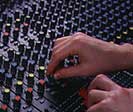| Author
|
Frequency Cutting
|
tribalizer

Started Topics :
5
Posts :
115
Posted : Mar 23, 2006 15:33
|
wow! That PLParEQ thing shure looks awesome. If one is to beleive the company's blurb it shure beats everything ive seen so far...(apart from UAD-1's!)
ill give it a try!
|

|
|
gill
Melorix

Started Topics :
18
Posts :
628
Posted : Mar 24, 2006 13:01
|
|
Elad
Tsabeat/Sattel Battle

Started Topics :
158
Posts :
5306
Posted : Mar 25, 2006 04:55
|
|
Freeflow
IsraTrance Full Member

Started Topics :
60
Posts :
3709
Posted : Mar 26, 2006 18:21
|
voxengo gliss eq - i also like this one, i think its pretty transparent...
|

|
|
e-motion
IsraTrance Full Member

Started Topics :
71
Posts :
933
Posted : Mar 26, 2006 21:02
|
|
Waves REQ, Voxengo GlissEQ and Eqium. |

|
|
parapsyched
Scratch 22

Started Topics :
72
Posts :
548
Posted : Mar 26, 2006 21:53
|
but so far no one actually answered the question...
about cutting high`s and lows from sounds or cutting mid`s on others etc.
comments anyone?
        if u dig deep enough u just might reach the sky... if u dig deep enough u just might reach the sky...
"dream is destiny"
http://www.scratch-22.com |

|
|
Get-a-fix
Getafix

Started Topics :
147
Posts :
1441
Posted : Mar 28, 2006 11:26
|
^^
Its hard to give exact frequencies where you can high/low pass your sounds since it depends on the samples you are using..
It usually makes sense to highpass most of your sounds to leave room for your bass and kick..
Kick Drum
Any apparent muddiness can be rolled off around 300Hz. Try a small boost around 5-7kHz to add some high end.
50-100Hz ~ Adds bottom to the sound
100-250Hz ~ Adds roundness
250-800Hz ~ Muddiness Area
5-8kHz ~ Adds high end prescence
8-12kHz ~ Adds Hiss
Snare
Try a small boost around 60-120Hz if the sound is a little too wimpy. Try boosting around 6kHz for that 'snappy' sound.
100-250Hz ~ Fills out the sound
6-8kHz ~ Adds prescence
Hi hats or cymbals
Any apparent muddiness can be rolled off around 300Hz. To add some brightness try a small boost around 3kHz.
250-800Hz ~ Muddiness area
1-6kHz ~ Adds presence
6-8kHz ~ Adds clarity
8-12kHz ~ Adds brightness
Bass
Try boosting around 60Hz to add more body. Any apparent muddiness can be rolled off around 300Hz.If more presence is needed, boost around 6kHz.
50-100Hz ~ Adds bottom end
100-250Hz ~ Adds roundness
250-800Hz ~ Muddiness Area
800-1kHz ~ Adds beef to small speakers
1-6kHz ~ Adds presence
6-8kHz ~ Adds high-end presence
8-12kHz ~ Adds hiss
Vocals
This is a difficult one, as it depends on the mic used to record the vocal. However...Apply either cut or boost around 300hz, depending on the mic and song.Apply a very small boost around 6kHz to add some clarity.
100-250Hz ~ Adds 'up-frontness'
250-800Hz ~ Muddiness area
1-6kHz ~ Adds presence
6-8kHz ~ Adds sibilance and clarity
8-12kHz ~ Adds brightness
Piano
Any apparent muddiness can be rolled off around 300Hz. Apply a very small boost around 6kHz to add some clarity.
50-100Hz ~ Adds bottom
100-250Hz ~ Adds roundness
250-1kHz ~ Muddiness area
1-6kHz ~ Adds presence
6-8Khz ~ Adds clarity
8-12kHz ~ Adds hiss
Electric guitars
Again this depends on the mix and the recording. Apply either cut or boost around 300hz, depending on the song and sound. Try boosting around 3kHz to add some edge to the sound, or cut to add some transparency. Try boosting around 6kHz to add presence. Try boosting around 10kHz to add brightness.
100-250Hz ~ Adds body
250-800Hz ~ Muddiness area
1-6Khz ~ Cuts through the mix
6-8kHz ~ Adds clarity
8=12kHz ~ Adds hiss
Acoustic guitar
Any apparent muddiness can be rolled off between 100-300Hz. Apply small amounts of cut around 1-3kHz to push the image higher. Apply small amounts of boost around 5kHz to add some presence.
100-250Hz ~ Adds body
6-8kHz ~ Adds clarity
8-12kHz ~ Adds brightness
Strings
These depend entirely on the mix and the sound used.
50-100Hz ~ Adds bottom end
100-250Hz ~ Adds body
250-800Hz ~ Muddiness area
1-6hHz ~ Sounds crunchy
6-8kHz ~ Adds clarity
8-12kHz ~ Adds brightness
EQ Tables
__________
50Hz
1. Increase to add more fullness to lowest frequency instruments like foot, toms, and the bass.
2. Reduce to decrease the "boom" of the bass and will increase overtones and the recognition of bass line in the mix. This is most often used on bass lines in Rap and R&B.
__________
100Hz
Increase to add a harder bass sound to lowest frequency instruments.
Increase to add fullness to guitars, snare.
Increase to add warmth to piano and horns.
Reduce to remove boom on guitars & increase clarity.
__________
200Hz
1. Increase to add fullness to vocals.
2. Increase to add fullness to snare and guitar (harder sound).
3. Reduce to decrease muddiness of vocals or mid-range instruments.
4. Reduce to decrease gong sound of cymbals.
__________
400Hz
1. Increase to add clarity to bass lines especially when speakers are at low volume.
2. Reduce to decrease "cardboard" sound of lower drums (foot and toms).
3. Reduce to decrease ambiance on cymbals.
__________
800Hz
1. Increase for clarity and "punch" of bass.
2. Reduce to remove "cheap" sound of guitars
__________
1.5KHz
1. Increase for "clarity" and "pluck" of bass.
2. Reduce to remove dullness of guitars.
__________
3KHz
1. Increase for more "pluck" of bass.
2. Increase for more attack of electric / acoustic guitar.
3. Increase for more attack on low piano parts.
4. Increase for more clarity / hardness on voice.
5. Reduce to increase breathy, soft sound on background vocals.
6. Reduce to disguise out-of-tune vocals / guitars
__________
5KHz
1. Increase for vocal presence.
2. Increase low frequency drum attack (foot/toms).
3. Increase for more "finger sound" on bass.
4. Increase attack of piano, acoustic guitar and brightness on guitars.
5. Reduce to make background parts more distant.
6. Reduce to soften "thin" guitar.
__________
7KHz
1. Increase to add attack on low frequency drums (more metallic sound).
2. Increase to add attack to percussion instruments.
3. Increase on dull singer.
4. Increase for more "finger sound" on acoustic bass.
5. Reduce to decrease "s" sound on singers.
6. Increase to add sharpness to synthesizers, rock guitars, acoustic guitar and piano.
__________
10KHz
1. Increase to brighten vocals.
2. Increase for "light brightness" in acoustic guitar and piano.
3. Increase for hardness on cymbals.
4. Reduce to decrease "s" sound on singers.
__________
15KHz
1. Increase to brighten vocals (breath sound).
2. Increase to brighten cymbals, string instruments and flutes.
3. Increase to make sampled synthesizer sound more real.
__________
Low Bass: anything less than 50Hz
This range is often known as the sub bass and is most commonly taken up by the lowest part of the kick drum and bass guitar, although at these frequencies it's almost impossible to determine any pitch. Sub bass is one of the reasons why 12" vinyl became available: low frequencies require wider grooves than high frequencies - without rolling off everything below 50Hz you couldn't fit a full track onto a 7" vinyl record. However we do NOT recommend applying any form of boost around this area without the use of very high quality studio monitors (not home monitors - there is a vast difference between home nearfield and studio farfield monitors costing anywhere between £5,000 and £20,000). Boosting blindly in this area without a valid reference point can and will permanently damage most speakers, even PA systems. You have been warned!
Bass: 50-250Hz
This is the range you're adjusting when applying the bass boost on most home stereos, although most bass signals in modern music tracks lie around the 90-200Hz area with a small boost in the upper ranges to add some presence or clarity.
Muddiness/irritational area: 200-800Hz
The main culprit area for muddy sounding mixes, hence the term 'irritational area'. Most frequencies around here can cause psycho-acoustic problems: if too many sounds in a mix are dominating this area, a track can quickly become annoying, resulting in a rush to finish mixing it as you get bored or irritated by the sound of it.
Mid-range: 800-6kHz
Human hearing is extremely sensitive at these frequencies, and even a minute boost around here will result in a huge change in the sound - almost the same as if you boosted around 10db at any other range. This is because our voices are centred in this area, so it's the frequency range we hear more than any other. Most telephones work at 3kHz, because at this frequency speech is most intelligible. This frequency also covers TV stations, radio, and electric power tools. If you have to apply any boosting in this area, be very cautious, especially on vocals. We're particularly sensitive to how the human voice sounds and its frequency coverage.
High Range: 6-8kHz
This is the range you adjust when applying the treble boost on your home stereo. This area is slightly boosted to make sounds artificially brighter (although this artificial boost is what we now call 'lifelike') when mastering a track before burning it to CD.
Hi-High Range: 8-20kHz
This area is taken up by the higher frequencies of cymbals and hi-hats, but boosting around this range, particularly around 12kHz can make a recording sound more high quality than it actually is, and it's a technique commonly used by the recording industry to fool people into thinking that certain CDs are more hi-fidelity than they'd otherwise sound. However, boosting in this area also requires a lot of care - it can easily pronounce any background hiss, and using too much will result in a mix becoming irritating.
That should put an end to all frequency related questions!
        http://www.soundcloud.com/getafixmusic http://www.soundcloud.com/getafixmusic |

|
|
tribalizer

Started Topics :
5
Posts :
115
Posted : Mar 28, 2006 19:36
|
HOLY SHIT, DUDE!
every single scattered informations ive gt over time gathered in one simple text!!!
post-of-the-year!
|

|
|
D-Alien
Oxidelic

Started Topics :
51
Posts :
619
Posted : Mar 28, 2006 20:10
|
Quote:
|
On 2006-03-20 13:27, z1P^ wrote:
h
anyways i think you are taking the right path to a inteligent and proper mixing... i recommend any parametric eq, with at leats 4 bands, try to eq using the lightest plugin you can cauz you'll end adding eqs to every channel ;D hope it helps brother,
cyaaaaaaaaaaaaa |
|
very smart advice. 4 example I was using the superb eq from VOXENGO, the GLISS EQ! but after I've inserted on 4-5 tracks my PC just wont process no more... its p4 - 3ghz 1gb Ram. I love Voxengo cuz it shows u in real time a spectrum wave and when u cut some freq, it shows it on the screen. So I insert the vozengo, make my modifications remeber the settings (which freqs I've cutted-added) and than chane the Voxengo Eq with the FatEq, the native EQ from Logic, which makes so good work and takes so little memory... and finally I'm ending having EQ's in all the tracks. Also its Obligatory to have low and hi cuts in the tracks where leads are. in most cases...
S-CUBE
Ou DUDE!!! U Inspire ppl here!!! just paste this valuable info to study and practing. Practise is the mother of all succes
good luck


        Sound: Sound:
www.myspace.com/oxidelic
www.myspace.com/setanicmusic
Image:
www.antumbra-studio.com |

|
|
Meta
Meta/Boomslang

Started Topics :
24
Posts :
1045
Posted : Mar 28, 2006 20:18
|
|
Get-a-fix
Getafix

Started Topics :
147
Posts :
1441
Posted : Mar 28, 2006 20:25
|
|
Schizomorph

Started Topics :
3
Posts :
50
Posted : Mar 29, 2006 05:47
|
|
Wow very usefull post S-Cube. I usually do it by ear but your post is so good it's idiotproof:-) |

|
|
Nobita
IsraTrance Junior Member

Started Topics :
30
Posts :
371
Posted : Mar 31, 2006 00:34
|
Thanks S-Cube ! Great post
        Row row row your boats gently down the stream; merrily merrily merrily merrily life is but a dream. Row row row your boats gently down the stream; merrily merrily merrily merrily life is but a dream. |

|
|